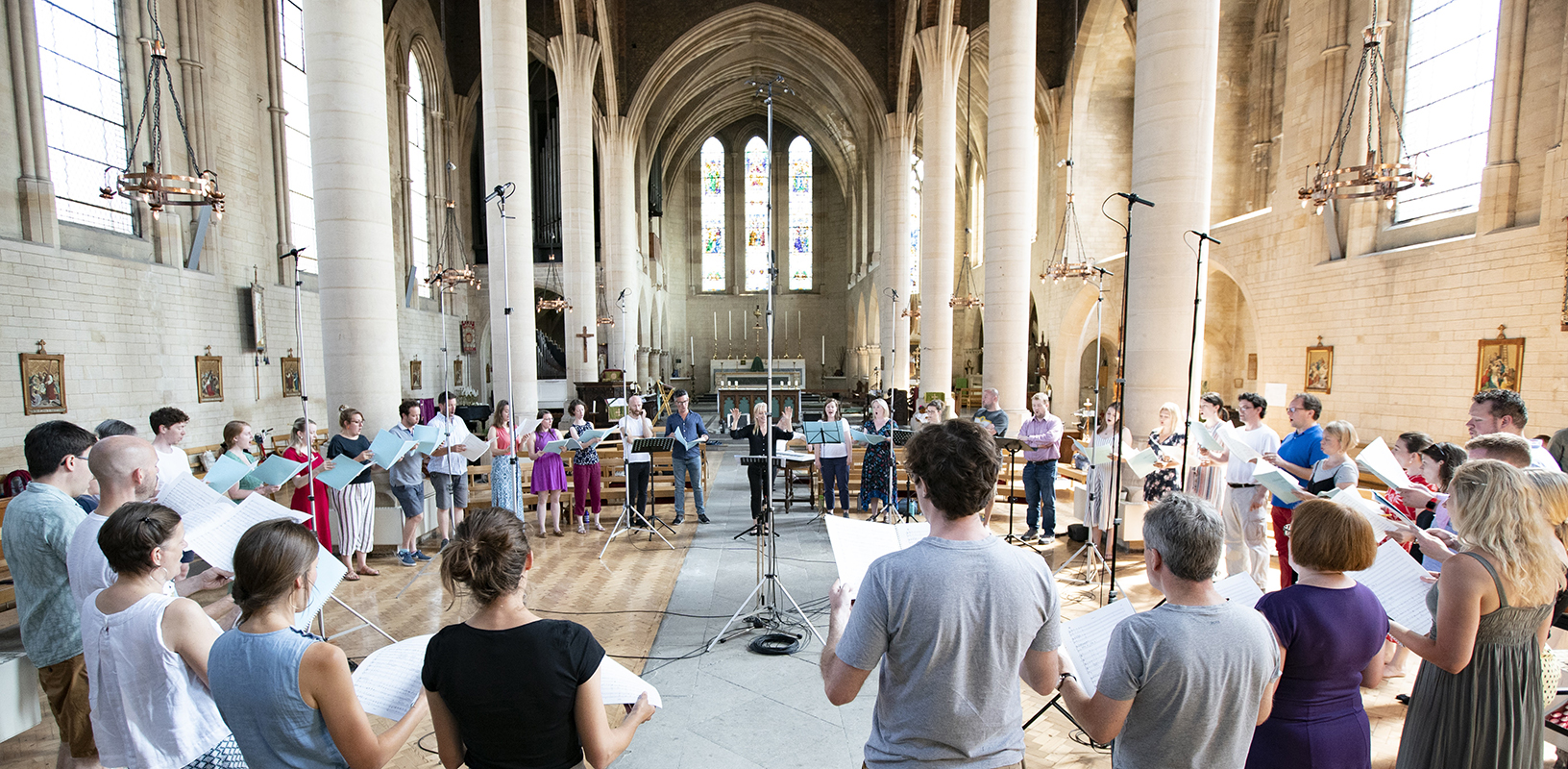MacMillan responds to Tallis’s Spem in alium

James MacMillan’s new Vidi aquam cascades across the 40 voice parts heard in Tallis’s choral masterpiece Spem in alium. The ORA Singers’ new recording is released on Harmonia Mundi on 21 August and the world premiere is livestreamed from Tate Modern’s Turbine Hall on 16 September.
The new 40-part choral work by James MacMillan, Vidi aquam, was commissioned by the ORA Singers in celebration of the 450th anniversary of the premiere of one of the masterworks of Renaissance choral polyphony, Thomas Tallis’s Spem in alium. A new recording on the Harmonia Mundi label features both works performed by the ORA Singers under the baton of their director Suzi Digby (HMM90266970).
As part of the ORA Singers’ Tallis 2020 programme a series of concerts and academic events around the Tallis and MacMillan coupling were scheduled and sadly postponed due to the pandemic. The world premiere of Vidi aquam has been re-scheduled as a livestream event on 16 September with the 40 voices spread around the remarkable space of Tate Modern’s Turbine Hall, viewable on the Tate’s website. A two-day event at the Oxford Festival of the Arts, Tallis - A Reflection, has been re-scheduled for June 2021 including a concert and discussion between James MacMillan and Suzi Digby on the creation of his new reflection on Spem in alium.
> Watch the premiere at Tate Modern (from 26'00")
> View a taster interview on Vidi aquam (from 20’20”)
> Buy the new Tallis/MacMillan recording
James MacMillan writes about the genesis of Vidi aquam: “I got to know the music of Tallis and Byrd at university - singing it, but also trying to emulate it in counterpoint studies. The English style is so unique and different to what was happening in mainland Europe, and of course these were the first composers who were being asked to set liturgical texts in the vernacular as well as Latin. (Tallis’s lf Ye Love Me became one of my favourite small-scale choral works.) The natural expression of religious feeling is effortless and profound in Tallis.
“Because of its complexity and richness of texture Tallis’s Spem in alium can feel like an extraordinary out-of-body experience and a real sense of reaching out of the every-day into another place. The first time I heard it I was struck by the explosions and cascades of syllables, sibilants and plosives which felt like another layer of strangeness in the music. Also, because Tallis is careful in his use of tutti moments, the passages in forty parts always sound ecstatic and overwhelming, the fullness of counterpoint never becoming oppressive.
“I approached creating a new reflection on Spem in alium with great respect and reverence - fear even! The task seemed dauntingly huge so I used the Tallis original as a guide and template. My music in Vidi aquam follows the original sweep around the eight choirs, and the tutti moments are shaped by how Tallis placed his. Also, the reason that forty vocal parts work is due to the 16th century style which is unmatched by any later style. I took this on board and allowed my own counterpoint to be influenced by the ancient model.
“Eventually though, I was able to let go, and my music becomes more impressionistic, where the plethora of voices create a floating, smudging sound - almost as if the music has gone to sleep and is in a dream. I was able to use modern compositional techniques to bring about this side-stepping in style, so that there emerges a kind of dialogue between the ancient and the modern.
“The text of Spem is short and restricted - no word is wasted or seems superfluous or unwieldy. I needed something similar, and I remembered the Easter antiphon Vidi aquam accompanying the sprinkling of baptismal water, from my own liturgical experiences. It’s a text which says what it needs succinctly and effectively. Such a text then gives the composer a lot of room to move.
“Approaching the technical challenge of weaving such complex multi-voice polyphony, I had to feel the underlying ‘harmonic’ or chordal tread which allowed me to activate the forty individual parts. I think that’s what the Renaissance composers did when they wrote these huge things and that was a singularly important lesson from history for me.”
The coming season should – pandemic permitting – bring first performances of James MacMillan’s new Christmas Oratorio, commissioned by the London Philharmonic Orchestra, NTR Zaterdag Matinee, Melbourne Symphony Orchestra and the New York Philharmonic Orchestra.
> Further information on Work: Vidi aquam
Photo: recording of Vidi aquam by the ORA Singers (Nick Rutter)
